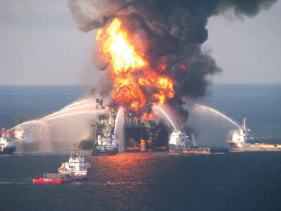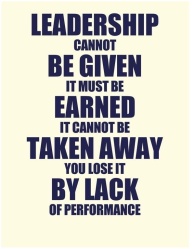One of the best leaders I have worked with in construction had a favourite saying “Never underestimate the shadow you cast”. It was one of those statements which, if it made sense to you, was a constant reminder to be genuine, operate from your values and maintain your integrity and character, in particular – hold the line to safety.
As work is regularly done in a social setting it is the norm rather than the exception that we are influencing culture everytime we do or do not do something. Most people rarely appreciate the effect they have on others, in particular, those who report to you or are affected by your decisions.
 I’ve seen many managers complete fantastic inspections, audits and discussions with crews, only to sour the effect by not following through to make sure action is taken after they leave. It’s a simple process to follow through and follow up, but in busy schedules sometimes people get left behind.
I’ve seen many managers complete fantastic inspections, audits and discussions with crews, only to sour the effect by not following through to make sure action is taken after they leave. It’s a simple process to follow through and follow up, but in busy schedules sometimes people get left behind.
The best intentions do not make the leader, people choose to follow or comply based on action taken.
We are all human and for most, our memories fail us more often than meets would care to admit. In the age of technology, however, we should be loathe to solely rely on our brains so affected by cognitive bias. If you don’t currently use a task manager/tracker or have a personal system you should consider adopting one, even if you have safety systems in place. It is personal follow up rather than system compliance which generates an interventionist culture. See here for a useful primer of the top five currently available. And if you really want to generate positive culture across multiple sites repurposing this information into actionable visual content (photos and videos) is a great way to communicate messages
For those who want further here is a paper which outlines what can happen when senior leaders fail to focus on high-risk operational activities. Peer Reviewed Publication: Hopkins A, ‘Risk-management and rule-compliance: Decision-making in hazardous industries’ (2011) 49 Safety Science 110-120.
 From the Summary of the paper: Many companies understand that good management requires senior managers to spend time with front line workers. Some companies build into performance agreements for senior managers a requirement that they conduct a certain number of such site visits each year. The challenge is to make productive use of these visits. Safety is often a focus for visiting VIPs, but too often safety is understood to be a matter of “slips, trips and falls”, rather than the major hazards that can blow the plant or the rig apart. This paper will examine a VIP visit made to the Deepwater Horizon rig by senior managers from BP and from the rig owner, Transocean, just hours before the explosion. It will argue that, despite their best of intentions, these managers fell into the trap identified above. The paper also looks at things that senior managers can do to focus attention on the most significant hazards.
From the Summary of the paper: Many companies understand that good management requires senior managers to spend time with front line workers. Some companies build into performance agreements for senior managers a requirement that they conduct a certain number of such site visits each year. The challenge is to make productive use of these visits. Safety is often a focus for visiting VIPs, but too often safety is understood to be a matter of “slips, trips and falls”, rather than the major hazards that can blow the plant or the rig apart. This paper will examine a VIP visit made to the Deepwater Horizon rig by senior managers from BP and from the rig owner, Transocean, just hours before the explosion. It will argue that, despite their best of intentions, these managers fell into the trap identified above. The paper also looks at things that senior managers can do to focus attention on the most significant hazards.
 To complement the above on how leaders fail to appreciate the shadows they cast, Richard Coleman wrote a fantastic article Please Boards & Senior Leaders Stop ‘Symbolising’ Your Support for Safety.
To complement the above on how leaders fail to appreciate the shadows they cast, Richard Coleman wrote a fantastic article Please Boards & Senior Leaders Stop ‘Symbolising’ Your Support for Safety.
I implore you to start a dialogue with your leaders on the above concept. It can be self-reflection, facilitated or coached but I firmly believe that this is a core area where we can all improve. It will go a long way in improving engagement, safer outcomes and greater productivity of our teams.